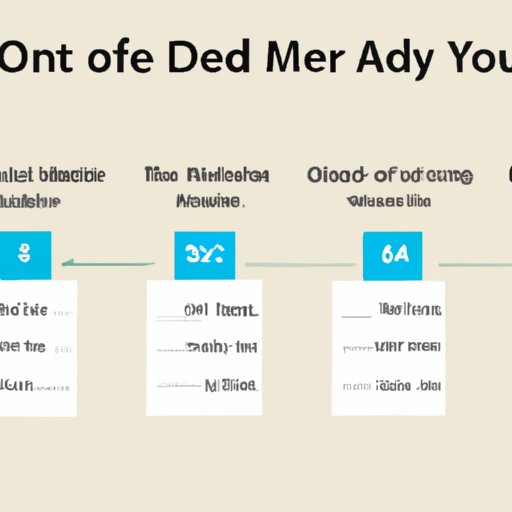I. Introduction
When it comes to paying for things or sending money to someone, there are a lot of options available. One option that offers security and convenience is a money order. A money order is a payment method where a payment order is issued by a third party, such as a bank or post office. It is typically purchased for a specific amount, and it can be used to pay for goods and services or sent to someone as payment. Knowing how to fill out a money order is important to ensure that your payment is accepted and processed correctly.
II. Step-by-Step Guide
Whether you’re paying for rent, sending money to a friend, or making a purchase, filling out a money order is a straightforward process. Here’s a step-by-step guide:
- Write the name of the person or company that will receive the payment on the “payee” or “pay to the order of” line. Make sure to spell the name correctly and include any necessary titles or middle names.
- In the “payer” or “from” section, write your name and address. This is important in case there is an issue with the money order or it gets lost in the mail.
- Write the amount of the payment in both numbers and words. Make sure the amounts match exactly.
- Sign the money order in the designated area. If you’re paying for something, you may need to add your account number or other identifying information.
- Detach the receipt from the money order and keep it for your records. This is proof of your payment.
- Mail or deliver the money order to the appropriate recipient.
It’s important to note that some money orders may have slightly different or additional steps, so be sure to read the instructions carefully before filling out your money order.
III. Troubleshooting Tips
Even if you follow the steps carefully, mistakes can happen when filling out a money order. Here are some of the most common errors and how to avoid them:
- Misspelling the recipient’s name: Double-check the spelling of the name and make sure to include any necessary titles or middle names.
- Incorrectly writing the amount: Make sure you write the amount in both numbers and words, and that they match exactly.
- Using an incorrect pen: Most money orders must be filled out using a pen with black or blue ink. Avoid using pencils or other colors.
- Not signing the money order: Don’t forget to sign the money order in the designated area. Unsigned money orders may not be accepted.
IV. Video Tutorial
If you’re a visual learner or prefer to see each step in action, a video tutorial can be helpful. Here’s a great one we found:
V. Interactive Infographic
Visual aids can also be a helpful way to learn how to fill out a money order. Here’s an interactive infographic that walks you through the process:
VI. Frequently Asked Questions
Here are some frequently asked questions about money orders:
- Where can I buy a money order? Money orders can typically be purchased at banks, post offices, and some retail stores.
- How much does a money order cost? The cost of a money order varies depending on where you purchase it, but it typically ranges from $1 to $5.
- Is it necessary to have a bank account to purchase a money order? No, you do not need to have a bank account to purchase a money order.
- Are money orders traceable? Yes, most money orders can be traced in case there is a problem with delivery or if you need to cancel the payment.
VII. Tips for Safety
Carrying cash can be risky, so using a money order can offer more security. Here are some tips to protect yourself when filling out a money order:
- Fill out the money order at the post office or other authorized location. This ensures that the money order is legitimate and reduces the risk of fraud.
- Avoid making out money orders for large amounts. This can also reduce the risk of fraud and minimize your loss if the money order is lost or stolen.
VIII. Bank vs. Money Order
While some people prefer to use their bank account for payments and transactions, there are advantages to using a money order:
- More secure: Money orders can offer more security than carrying around cash.
- No bank account required: You do not need to have a bank account to purchase a money order.
- Easier to send money: Money orders can be sent to someone as payment, even if they do not have a bank account.
However, there are some disadvantages as well:
- Cost: Money orders typically come with a fee, while many bank transactions are free.
- Limited amounts: Money orders are typically limited to a certain amount, so they may not be suitable for larger transactions.
- May take longer: Sending a money order can take longer than sending money through a bank account or other electronic transfer.
IX. Conclusion
Now that you know how to fill out a money order, you can feel confident in using this payment method for your transactions. If you have any questions or concerns, be sure to refer back to this guide for troubleshooting tips and answers to common questions.
